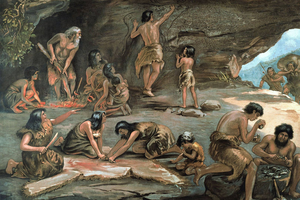With the new technology, researchers can identify locations up to a million years old.

Scientists have developed a new technology using artificial intelligence, which allows them to identify locations where antiquities were located in ancient times. Using this technology, researchers have discovered a million-year-old hearth in Israel, which may be one of the first locations for cooking, according to Artnet.
Read also: The ancient Romans were accused of reducing the population of the world's rarest seals
>
Philip Natalio, an archaeologist at the Weizmann Research Institute in Tel Aviv, wanted to find a way to detect invisible traces of fire, such as changes in atomic composition. Following research that shows how bone changes when burned, Natalio realized that burnt bone absorbs infrared waves of different lengths in different ways.
The scientist and his colleagues have created a program that uses ultraviolet light to detect subtle features faster than humans can. Researchers tested it on 26 silicon guns that pulled Euron from a quarry in northwestern Israel in the 1970s. As a result, they were able to determine that the location of the site is 800,000 to 1 million years old.
So far, artificial intelligence is unable to distinguish natural fire from that kindled by man. However, with its help, researchers have been able to more accurately date the time when ancient people began to use fire than with other methods.
some tools indicate that it was used for cooking. This makes it one of the earliest cooking sites known to date. Maybe it's because hominins don't use fire very often, but maybe it's because we're missing something. So it's really important, “said Dennis Sandgate, an anthropologist at Simon Fraser University. They used the fire for a variety of purposes, and placed the hearth in the optimal location of their cave to get the most out of the harmful effects of unhealthy smoke.




